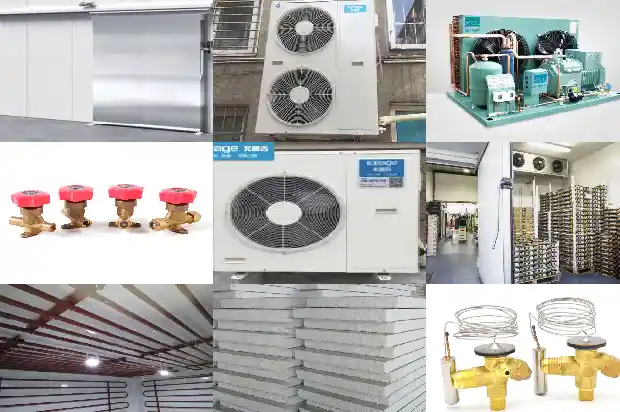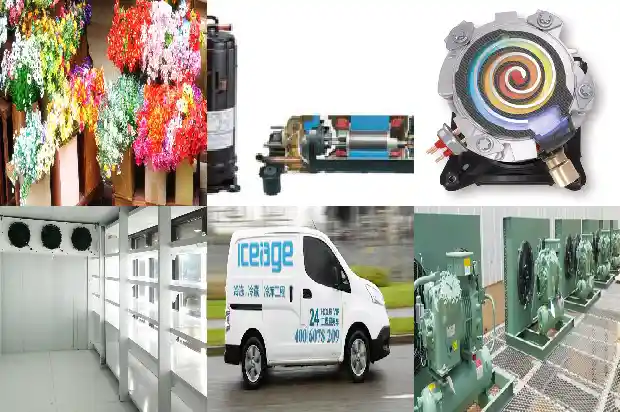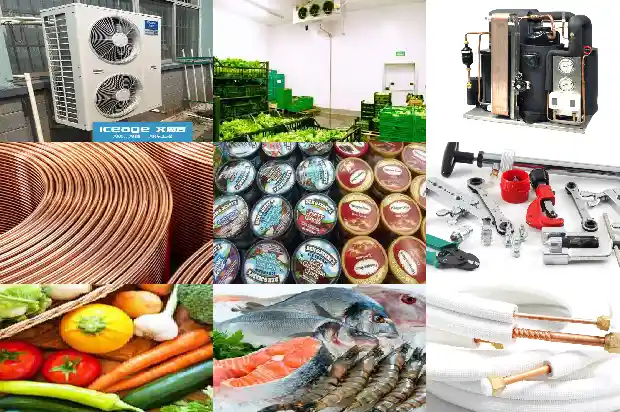How much cooling capacity does outdoor fresh air in winter have?
2024-09-30
- Advantages of outdoor fresh air cooling
When the outdoor temperature is below 5°C or 0°C, there are conditions to use outdoor fresh air as a cold source.
However, when the outdoor temperature is below 0°C, if cooling tower cooling is continued to be used, a series of antifreeze measures need to be taken.
Therefore, in periods of low outdoor temperature, the way of using outdoor fresh air, which is more economical and simple than cooling tower cooling, should be adopted as much as possible.
For all-air systems, fresh air is used as the cold source for the inner zone or some outer zones with strong solar radiation in winter. If the indoor temperature is set at 24°C, when the outdoor temperature is below 0°C, as long as the fresh air ratio is greater than 40%, or when the outdoor temperature is below 5°C, as long as the fresh air ratio is greater than 50%, the mixed temperature of fresh air and return air can be lower than 15°C.
For buildings with general load density, this can basically meet the cooling load needs. - Outdoor fresh air cooling load
(1) Places that need humidification
If a fan coil unit plus central fresh air system is used, for occasions where humidification is needed in winter such as office buildings, with the indoor temperature set at 24°C and the relative humidity at 30%, the specific enthalpy of indoor air is 38 kJ/kg.
The supply air parameters of central fresh air (heating and humidification) are taken as follows: the supply air is heated to a temperature of 12°C and isothermally humidified to a relative humidity of 95%, and the supply air specific enthalpy is 13.5 kJ/kg. When this state parameter absorbs indoor heat and rises to 24°C, the relative humidity is close to 30%.
Calculated according to a fresh air volume of 30 m3/(person·h) and an occupied usable area of 4 m2 per person, the cooling load that fresh air can bear is approximately:
30 m3/(person·h) × 1.2 kg/m3 × (38 kJ/kg - 13.5 kJ/kg) × 1000 W/kW ÷ (4 m2/person × 3600 s/h) = 61 W/m2.
(2) Places that do not need humidification
If a fan coil unit plus central fresh air system is used, for occasions where humidification is not needed in winter such as shopping mall buildings, with the indoor temperature set at 22°C and the relative humidity at 30%, the specific enthalpy of indoor air is 34 kJ/kg.
The supply air parameters of central fresh air (isothermal heating) are taken as follows: the supply air temperature is 6°C and the supply air specific enthalpy is 8.
4 kJ/kg. Calculated according to a fresh air volume of 20 m3/(person·h) and an occupied usable area of 3 m2 per person, the cooling load that fresh air can bear is approximately:
20 m3/(person·h) × 1.2 kg/m3 × (34 kJ/kg - 8.4 kJ/kg) × 1000 W/kW ÷ (3 m2/person × 3600 s/h) = 57 W/m2. - Summary
It can be seen that air-conditioned rooms with a sensible heat load of no more than 60 W/m2 in winter have the conditions to use fresh air as a cold source.
Only when the sensible heat load density is large and fresh air is insufficient to meet the cooling requirements is it necessary to operate the cooling tower for cooling.
The above calculations are all based on the minimum fresh air volume standard. If according to the principle of being conducive to energy saving, there are conditions for appropriately increasing the fresh air volume, it should be able to meet the use requirements. In fact, many two-pipe systems have achieved good results by adopting the method of appropriately increasing the fresh air volume after renovation. Many new designs are also adopting this method.
Related Articles
- Remember! 3 Steps to Calculate Central Air - conditioner Cooling Capacity
- Introduction to common cooling capacity performance coefficient and main parameters of water chillers
- Influence of Fin Spacing of Evaporator in Air Cooler on Frost Formation
- Air - side Economizer
- Winter Approaches: How to Solve the Low High - pressure Issue of Air - cooled Condensing Units?
- What Are the Common Causes of Cold Air Blower Noise?
- How to Troubleshoot and Repair High - pressure Protection of Air - cooled Units?
- What Exactly Are the Ten Typical Malfunctions of Air Conditioners?
- What Misconceptions Should Be Avoided in Low - temperature Refrigeration System Repairs
- Practical Knowledge on Freeze Protection of Air - conditioning Equipment
- How to Read the High - and Low - Pressure Gauges of Refrigeration Air - conditioners?
- Analysis of Seven Reasons for Ice Formation in Computer Room Air Conditioners
- Air - conditioner Low - pressure Alarm? These Nine Common Causes
- Selection of Bypass Control Valves for Air - conditioning Water Systems
- Common Faults and Solutions of Central Air - conditioning Chiller Units
- Could a Tiny Copper Tube Cause a Multi - split Air Conditioner to Stop Cooling? Refrigeration Workers Must Pay Attention!
- Maintenance Techniques for Air - conditioning Refrigeration Systems
- Considerations in Selecting Packaged Air Conditioners and Their Heat Recovery Operations
